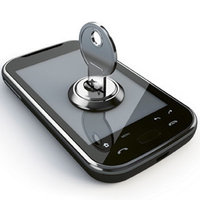Everyone that has kids has most likely found the magic that is an Android or similar tablet. There are literally thousands of apps that can keep a child happy and content for hours. Many of them provide a great learning environment also.
Highlights of Contents
Safety and Security
In addition to fun and learning, there are issues that can come with some apps. Many people download and install free apps for their kids and themselves, but have their credit cards on file with the app vendor system and that can lead to trouble.
There are other ways that trouble can come from the app store. Bear in mind that any child that has the ability to open an app has the ability to open the app store and that means that everything that you have available to you is available to them.
Most of the time the app store is readily available without a password, as long as the user stays logged in. If the user logs out, then there is the chance that some of the apps themselves will cease to function properly or at all.
A Foundation of Security
Unlike desktop operating systems, most tablets do not have the ability to maintain separate user accounts. That means that the tablet is either logged on and up and running or it is logged off. At this point, without running through scores of settings, there is no native way to have a child logged onto the tablet without full control.
Passwords are the root of most security breaches. Any internet user most likely has one to five common passwords that they use. This is because everyone wants to keep things short and simple, but different websites require different password criteria. Most users have a short and sweet password and a longer password with capitals and numbers.
The best foundation for security is always using a longer password that meets high standards of security. The password should never be shared and never be written down. It should not be based on common knowledge items such as birth dates and names.
One nice bit of advice from one of the world’s best known programmers is to use information that a friend might use. For example, I can use with friends child’s birthday and he/she can use mine. That adds an extra step between the person and the information that make a password harder to guess.
Another bit of advice is to use a separate account for the child’s tablets. This can be an account that does not contain the credit card information that you use on your own account. This protects your information and also keeps the kids from ordering apps by accident or in purpose.
The account can use a prepaid credit card if you want to order apps for the kids or a debit card that is connected to a smaller bank account. The account can even have mobile alerts set up on it so that you know when something is ordered. It is also easier to cancel the credit card associated with that account if need be without putting your own daily spending on hold.
Secondary Security
This is just as important as the first level of security. There are apps and programs that can add more security to the tablet or mobile PC that the kids use. There are apps that do everything from let you watch remotely what the kids are doing to locking the system down if there is a reason to do so.
There are apps that will send you an alert if there is an attempt to spend money from the tablet and the same apps can be used to confirm or deny purchases remotely. These apps can come from third party vendors, the banks or from Android and like companies.
The best line of defense is common sense. If you know that your child is particularly interested in a new app and they have been prone to not asking permission to spend money in the past, then a little extra attention may need to be given.
Kids learn from the adults they see, so let them see you behave responsibly and they are more likely to do the same. Back up common sense with the right software and pay attention to what the kids are doing and everything will be just fine.

